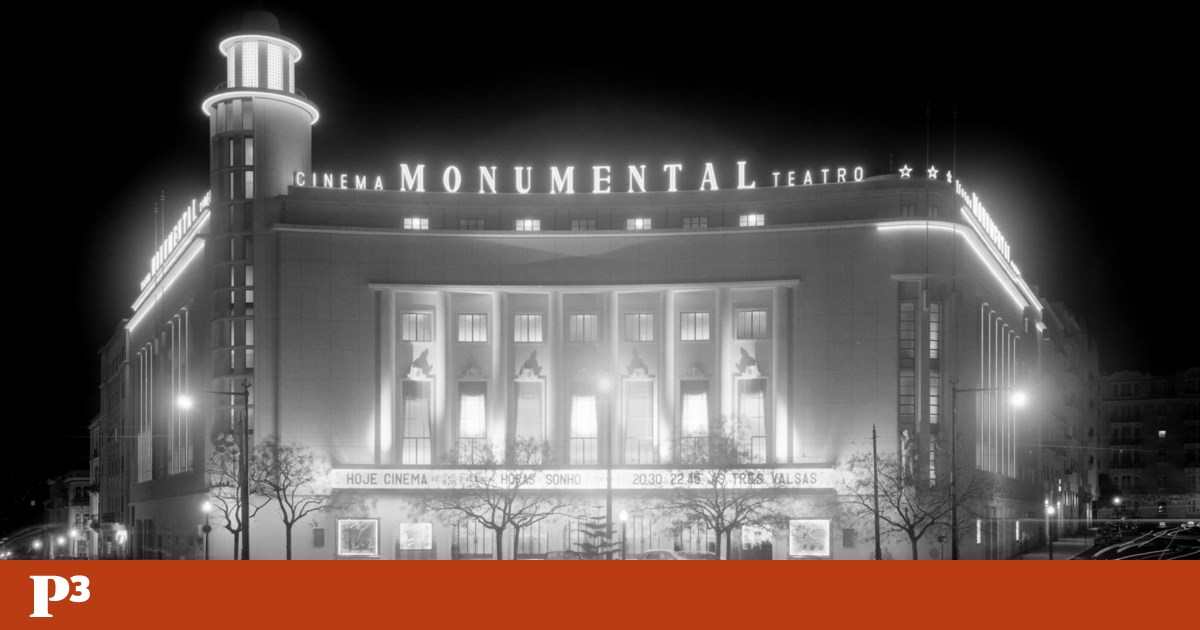During the 20th century, many cinemas were established in downtown Lisbon and its surroundings. But not all have stood the test of time. Some were demolished along with the buildings that served as their homes, others were dismantled and their spaces restored. Currently, only a portion of those that existed until the end of the 20th century are still active. Photographs from the Calouste Gulbenkian Foundation's archive of old cinemas in the capital, recently compiled and published In an article on the organization’s websiteallow a rare look into interior spaces erased by time and preserved by photography.
There are those who still remember the huge movie theater in Duque de Saldanha Square, which operated between 1951 and 1984. The four-storey building was originally designed by architect Rodriguez de Lima (1909-1979() It had characteristics that linked it aesthetically to the Estado Novo period, and showed traces of Portuguese modernism of the time. Each of its rooms seated more than a thousand spectators: the cinema room had nearly two thousand seats, and the theater room had just over a thousand seats. Its demolition in 1984 made way for a new building of the same name, which included a shopping centre, Banco BPI offices and four cinemas.
Considered one of the most important works of modernist architecture in Portugal, the Eden Cinema Theater was born in 1938, on Praça dos Restauradores, in central Lisbon. It had a characteristic that made it controversial at the time, which was its “blind façade” that did not contain windows. The cinema hall has a seating capacity of 1,554. The interior of the building was demolished in the early 1990s, but the facade has been maintained. The new construction made way for a hotel.
The Les Cinema, with a capacity of 630 spectators, opened on December 11, 1930 on Avenida Almirante Reis. On April 10, 1973, it was closed for renovations and opened under the name The Roxy, on June 26 of the same year, with 531 seats. It is currently a commercial building, where a shoe store once operated, which stands out from the rest by its striking domed facade that contrasts with the boulevard.
The first building to house the Cinema Europa had a capacity of 616 spectators and was opened in 1931, on Rua Francisco Mitras, in the Campo de Ourique district, in Lisbon. The work was designed by Raul Martinez, which combines elements art deco In the modern style, it was demolished in 1957, and the following year, it made way for the building that still stands today, converted into housing, a library, a playhouse, an auditorium, and the Europe Cultural Library/Cinema.
The Alvalade Cinema, located on Avenida di Roma No. 100, was established in 1953, in the heart of the Alvalade neighborhood, and has a capacity of about 1,500 spectators. In 1985 the cinema ceased operations and the building was leased to UCKG. Years later, in 2003, the building was demolished and the City Classic Alvalade building was built in its place, where films are still shown in the four cinemas that were secured. The fresco painted by Estrella Faria is still preserved next to the entrance.
In Largo de Santos, in Lisbon, the Cinearte Cinema, designed by architect Raúl Rodríguez Lima (1909-1979), was opened in 1949. Inside the building with modernist lines, the cinema remained in operation until 1981 and today is a property of importance. general. In 1990, after nine years of closure, and already in possession of the Lisbon City Council, the space was transferred to the theater company A Barraca, which maintains its operations there.

“Proud coffee junkie. Gamer. Hardcore introvert. Social media trailblazer.”

